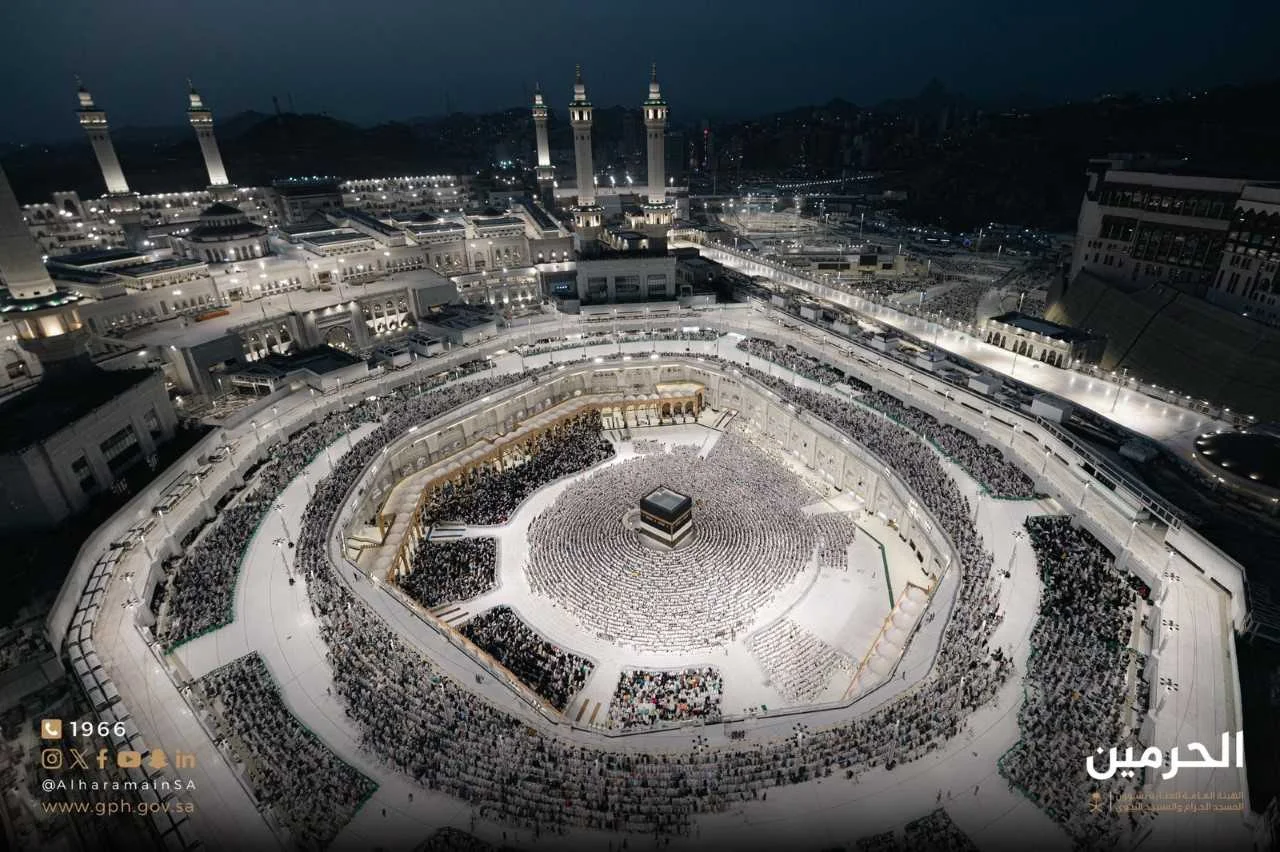
The Mataf, the white marble courtyard surrounding the Noble Ka’bah, known today as the "Sahn," is the vibrant heart of the Grand Mosque, pulsating with life and spirituality. In this sacred space, Muslims from every corner of the world gather to perform Tawaf around the Ka’bah in a majestic scene that embodies submission and devotion to Allah, where souls harmonize in Tawaf, Ruku, and Sujud. This continuous scene, unfolding day and night, tells the story of faith across the ages.
History and Development of the Mataf
The Mataf was initially a limited area surrounded by the ancient houses of Makkah, designated solely for Tawaf. It underwent successive expansions as the number of pilgrims grew. Abdullah ibn al-Zubair was the first to develop it using surrounding stones, marking the beginning of continuous care. During the Umayyad era, marble was introduced by al-Walid ibn Abdul Malik, and improvements continued under the Abbasid and Ottoman caliphs, who used white onyx marble to enhance its floor.
In the Saudi Era Under Wise Saudi Leadership
The Mataf witnessed an unprecedented architectural and spiritual renaissance. It underwent major expansions to accommodate the increasing numbers of pilgrims and visitors. In 1388 AH, the Mataf’s diameter was expanded to 64.8 meters, and in 1399 AH, its area was increased to 8,500 square meters. The flooring was replaced with bright white marble, specially designed to remain cool under the feet of pilgrims even in the hottest conditions.
Spiritual Landmarks in the Mataf’s Architecture
The Mataf was adorned with pillars carrying lanterns that illuminated the nights of Tawaf. These efforts began in early times and continued under Caliph Abdul Malik ibn Marwan, who established the first organized lamps to light the Mataf. Over time, the pillars evolved into more durable and beautiful columns, adding a majestic spiritual atmosphere to the place.
The Mataf housed numerous landmarks with deep religious and historical significance, such as the Zamzam well, the watering place of Abbas, and the Bani Shaybah gate, through which Prophet Muhammad (may Allah’s salah and salam be upon him) entered. With modern expansions, these landmarks were rearranged to preserve their sanctity while providing more space for pilgrims to move and worship with devotion.
The pulpit, from which preachers delivered the message of Islam, evolved over time. From the small wooden pulpit gifted by Muawiyah ibn Abi Sufyan to the ornate pulpit sent by Harun al-Rashid, and the marble pulpit gifted by Sultan Suleiman al-Qanuni in 966 AH, adorned with gold and silver, it became one of the greatest architectural masterpieces. In the Saudi era, modern technology was integrated into the pulpit while preserving its authenticity, allowing remote control operation, blending ancient beauty with modern innovation.
The four Maqams, symbolizing the diversity of Islamic schools of thought, were removed during the era of King Abdul Aziz in 1377 AH, aiming to unify Muslim ranks and eliminate sectarianism.
Conclusion
The Mataf has been and will remain a testament to the spirituality and rich history of Muslims. With every modification or expansion, the primary goal is to serve the guests of Allah and facilitate their worship. The Mataf remains a symbol of monotheism, where souls and hearts converge in the presence of the House of Allah.